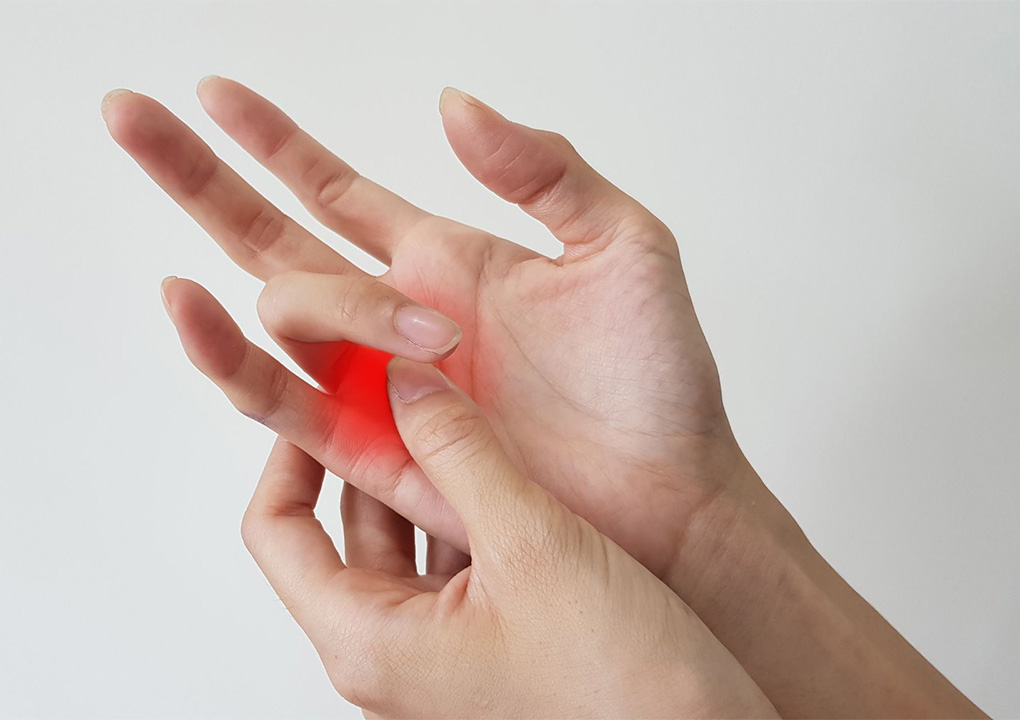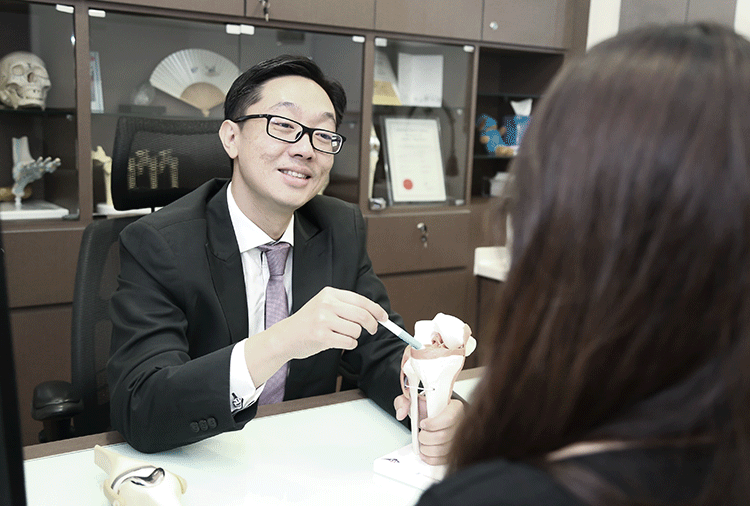Trigger finger, also known as stenosing tenosynovitis, is a condition where one of the fingers gets stuck in a bent position and snaps or pops when straightened. This occurs due to inflammation or thickening of the tendon sheath, restricting the smooth movement of the tendon. Treatment is important to alleviate symptoms, improve finger mobility, and prevent complications such as permanent stiffness or loss of function.
What Is Trigger Finger, And Why Is Treatment Important?
What Are The Causes And Risk Factors Of Trigger Finger?
Several factors can contribute to the development of trigger finger, including:
Repetitive Finger Movements – Activities or occupations that involve repetitive gripping or grasping motions, such as typing, sewing, or playing musical instruments, can strain the tendons and increase the risk of inflammation.
Medical Conditions – Certain medical conditions such as rheumatoid arthritis, diabetes, or gout may increase the risk of developing trigger finger.
Age and Gender – Trigger finger is more common in individuals aged 40 to 60 years and is more prevalent in women than men.
Hand Anatomy – Anatomical variations or abnormalities in the hand or fingers may predispose individuals to develop trigger finger.
Trauma or Injury – Previous hand or finger injuries, trauma, or surgery can increase the risk of developing trigger finger.
What Are The Common Symptoms Of Trigger Finger?
The symptoms of trigger finger may vary in severity but commonly include:
Catching or Locking – The affected finger may catch, lock, or snap when attempting to bend or straighten it, especially after periods of inactivity or upon waking in the morning.
Pain or Discomfort – Pain, tenderness, or discomfort at the base of the affected finger or thumb, particularly with movement or pressure.
Swelling – Swelling, warmth, or redness around the affected finger joint, indicating inflammation or irritation of the tendon sheath.
Stiffness – Stiffness or limited range of motion in the affected finger, making it difficult to fully bend or straighten.
Popping Sensation – A popping sensation or audible clicking noise when the finger snaps or unlocks from the locked position.
Bump or Nodule – A small bump or nodule may develop at the base of the affected finger or thumb, indicating thickening or inflammation of the tendon sheath.
How is Trigger Finger Diagnosed?
Trigger finger is typically diagnosed through medical history, physical examination, and sometimes imaging tests. Here’s how it’s diagnosed:
Medical History – Your doctor will ask about your symptoms, including any pain, stiffness, or locking sensations in your finger or thumb. They may inquire about any activities or repetitive movements that could be contributing to your symptoms.
Physical Examination – During the physical examination, your doctor will:
- Assess the range of motion of your affected finger or thumb. Palpate the affected area to check for tenderness, swelling, or nodules in the flexor tendon sheath.
- Observe any clicking, popping, or locking of the affected finger or thumb during movement.
- Perform specific manoeuvres to reproduce symptoms, such as the “triggering” of the finger or thumb when flexing or extending.
Diagnostic Tests – In most cases, trigger finger can be diagnosed based on medical history and physical examination alone. However, in some cases, your doctor may order imaging tests such as: Ultrasound X-rays
What are the Trigger Finger Treatment Options?
Rest and Activity Modification
Finger Splinting
Hand Exercises
Medications
Nonsteroidal Anti-Inflammatory Drugs (NSAIDs) – Over-the-counter or prescription NSAIDs such as ibuprofen or naproxen may help reduce pain and inflammation associated with the trigger finger.
Corticosteroid Injections – Injections of corticosteroids into the affected tendon sheath may help reduce inflammation and alleviate symptoms in cases of moderate to severe trigger fingers. Corticosteroid injections are typically used for short-term pain relief and may be repeated periodically if needed.
Hand Therapy
Tendon Release Surgery
Complementary and Alternative Therapies
Recovery and Prevention Strategies for Trigger Finger
For Recovery:
- Resting the affected finger or thumb by avoiding activities that trigger symptoms can help reduce inflammation and allow the affected tendon to heal.
- Applying ice packs to the affected finger or thumb can help reduce pain and inflammation. Use an ice pack or ice wrapped in a cloth and apply it to the affected area for 10-15 minutes several times daily.
- Wearing a splint or brace to keep the affected finger or thumb straightened can help reduce strain on the affected tendon and alleviate symptoms. A healthcare professional may recommend splinting, particularly at night or during activities that exacerbate symptoms.
- Gentle stretching exercises for the fingers and thumb can help improve flexibility and range of motion, reducing the risk of the tendon getting stuck in a bent position. Consult with a healthcare professional or physical therapist for guidance on appropriate exercises.
- Over-the-counter nonsteroidal anti-inflammatory drugs (NSAIDs), such as ibuprofen or naproxen, can help reduce pain and inflammation associated with trigger finger. Follow the recommended dosage and consult a healthcare professional if you have any concerns or underlying medical conditions.
- In cases of severe or persistent symptoms, corticosteroid injections may be used to reduce inflammation and alleviate symptoms. A healthcare professional typically administers these injections and may provide temporary relief.
For Prevention:
- Perform regular hand and finger exercises to strengthen the hand’s muscles and tendons, improve flexibility, and maintain proper finger and thumb alignment. Focus on exercises that target the muscles involved in gripping and grasping.
- Modify your workstation or activities to reduce repetitive hand and finger strain. Use ergonomic tools and equipment with padded handles or grips, adjust the height of your chair and desk, and take regular breaks to rest and stretch.
- Avoid repetitive gripping, grasping, or fine motor movements for extended periods, as these activities can increase the risk of developing trigger finger. Take breaks or alternate tasks to prevent overuse injuries.
- Use proper technique and form during activities and exercises to reduce strain on the tendons of the fingers and thumb. Avoid excessive gripping or repetitive motions that can contribute to the development of trigger finger.
- Always perform a thorough warm-up before engaging in activities that require hand and finger movements to prepare the muscles and tendons for movement. Likewise, cool down and stretch after activity to prevent stiffness and reduce the risk of injury.
- Maintain a healthy lifestyle by eating a balanced diet, staying hydrated, exercising regularly, and managing stress. These factors can contribute to overall joint health and reduce the risk of conditions such as trigger finger.
- Pay attention to any signs of discomfort, pain, or stiffness in the hands and fingers, and avoid pushing through pain during activities. If you experience persistent symptoms, modify your activities or seek medical evaluation and treatment.






